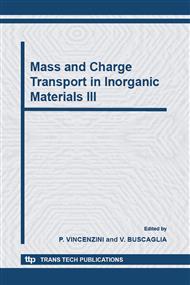p.1
p.11
p.21
p.27
p.32
p.42
p.48
Studies by In Situ and Real-Time Synchrotron Imaging of Interface Dynamics and Defect Formation in Solidification Processing
Abstract:
The solid microstructure built in the solid governs the properties of materials elaborated from the melt. In order to clarify the dynamical mechanisms controlling solidification processing, we use in situ and real-time synchrotron X-ray radiography at ESRF (European Synchrotron Radiation Facility) to analyze microstructure formation in thin aluminum alloys solidified in the Bridgman facility installed at the ID19 beamline. During directional solidification of Al - 3.5 wt% Ni alloys, global mechanical constraints induced by the shape are found to act on the solid microstructure. In particular, radiography videos of dendritic growth show disorientations of sidebranches induced by mechanical stresses. In the solidification of AlPdMn quasicrystals, live imaging reveals that facetted growth proceeds by the lateral motion of ledges at the solid-melt interface. When the solidification rate is increased, the kinetic undercooling becomes sufficient for grain nucleation and growth in the liquid. These grains develop specific features that can be attributed to grain competition and concomitant poisoning of growth caused by the rejection of aluminum in the melt.
Info:
Periodical:
Pages:
1-10
Citation:
Online since:
October 2006
Price:
Сopyright:
© 2006 Trans Tech Publications Ltd. All Rights Reserved
Share:
Citation:


